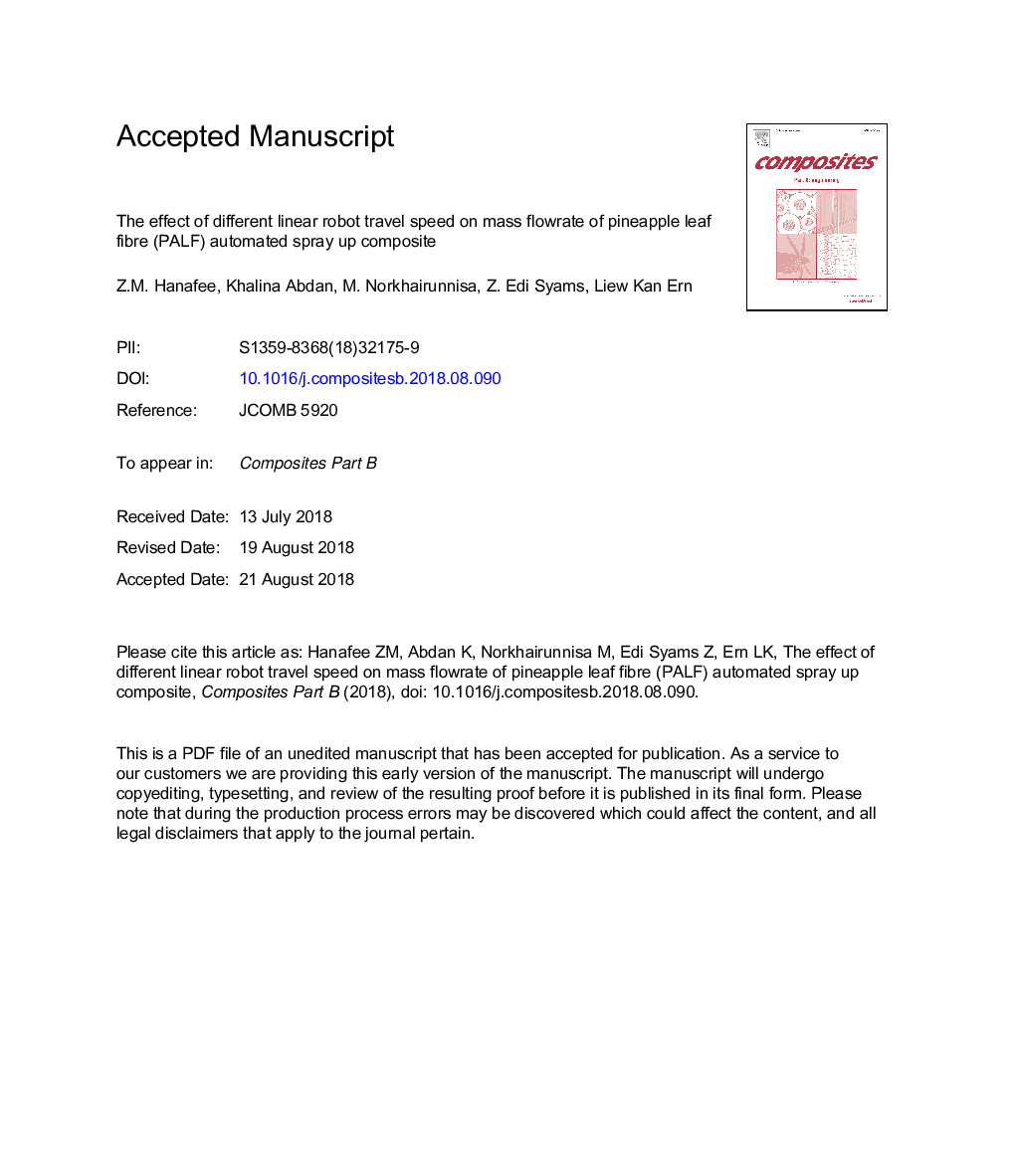| Article ID | Journal | Published Year | Pages | File Type |
|---|---|---|---|---|
| 10134023 | Composites Part B: Engineering | 2019 | 21 Pages |
Abstract
This paper investigates the effect of different linear robot travel speed on mass flowrate of bio composites automated spray up. The linear robot travel speed investigated are 0.5, 0.75, 1.0, 1.25 and 1.5â¯m/s. In this study, the manual chop spray gun is integrated with industrial robotic arm to produce random discontinuous fibre composite (DFC) from PALF roving (273 tex) and vinyl ester resin. Samples fabricated are tested for mechanical properties including tensile and flexural, and thermal properties including TGA and DMA. The results showed that the speed of 0.75â¯m/s yielded 28.70â¯MPa of tensile strength, tensile modulus of 3.17â¯GPa, with the lowest Coefficient of Variance (COV) of 9.51%, which denotes the best combination compared to all other robot speed. The flexural test depicted speed of 1.0â¯m/s to be the highest with 59.12â¯MPa with 18.10% COV, while speed 0.75â¯m/s produced the best COV of 12.67% despite lower flexural strength of 55.83â¯MPa. The TGA showed that the 0.75â¯m/s speed sample yielded the highest onset oxidation temperature (OOT) of 392.06â¯Â°C and highest maximum combustion temperature of 433.40â¯Â°C. The DMA depicted the highest Glass Transition Temperature (Tg) of 118.20â¯Â°C is also recorded by the 0.75â¯m/s robot speed composite sample.
Related Topics
Physical Sciences and Engineering
Engineering
Engineering (General)
Authors
Z.M. Hanafee, Abdan Khalina, M. Norkhairunnisa, Z. Edi Syams, Liew Kan Ern,
